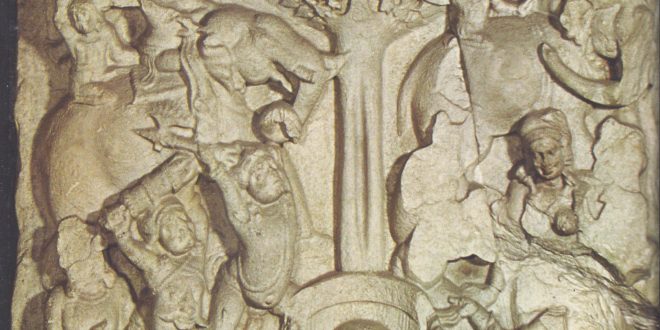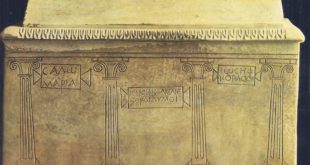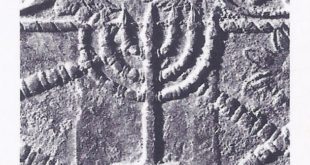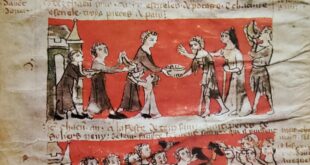The Buddha as he came to be known, was a young man, Gautama, who followed the usual pursuits of someone of his class. He hunted, played games, feasted and had many friends. He also inspired great personal devotion, which was to stand him in good stead later. Growing discontented with his life and determined to find enlightenment, he renounced his wealth and left Kapilavastu in order to lead an ascetic life, but Gautama found that this kind of existence, practiced in isolation, did not satisfy him. He believed that compassion for his fellow men should find practical expression. He returned to Gaya where he became the ‘fully-awakened”, or Buddha and he began to teach. Although Buddhism — the faith he founded — had not become supreme in India, it won many followers in Ceylon, Burma, Thailand, Tibet and played a crucial role in the development of China and Japan.
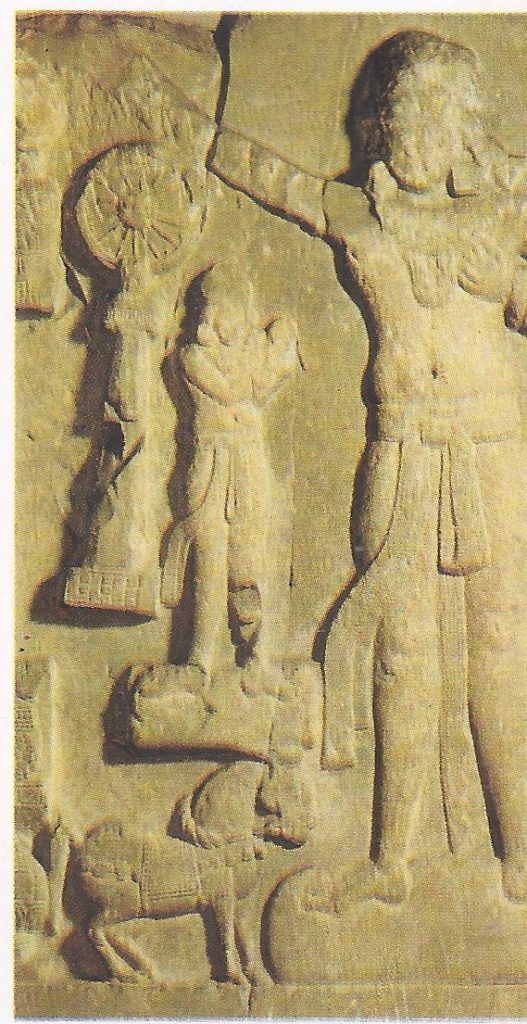
In the forested foothills of the Himalayas, in the region that is now central Nepal, there was born around the year 563 B.C. a man whose life and teachings were to have a profound influence throughout Asia and beyond. His personal name was Siddhartha, but he was known also as Gautama, the name of the family group to which he belonged. The Gautama family were Sakyas, one of a number of clans who inhabited the area between the river Ganges and the Himalayas, roughly to the northeast and northwest of the modern city of Patna.
The young Gautama, who was later also to be called Sakyamuni, or “Sage of the Sakyas,” grew up in the hill town of Kapilavastu. As the son of the leading clansman, Suddhodana, his lot must have been fairly pleasant and Buddhist tradition tells us that he was protected from contact with the harsher realities of life. Tradition also ascribes to his father the deliberate policy of shielding his son from knowledge of the evils of life, because at birth it had been predicted that the child was destined to become either a great ruler or a great ascetic and his father was determined that it should be the former.
The nature of the human condition could not be hidden indefinitely and Gautama’s disillusionment with the artificially soft life he was enjoying came about in early manhood. History traditionally represents this as happening through four chance encounters. First he met a very old man, “bent, decrepit, leaning on a staff, tottering as he walked, afflicted . . . ,” a sight that caused the young Gautama to reflect that the same fate awaits all humanity. Next he encountered a sick man, suffering great disease, unable to raise himself, in acute pain, needing to be tended and washed by others; again the young man became aware that debilitating illness was a possibility that lay in store for all. Then he saw a corpse being carried out to the funeral pyre, attended by sorrowing parents, relatives and friends. The same fate, he realized, awaits us all. Finally he encountered a samana, an ascetic holy man, with yellow robe and shaven head. Questioning him about his way of life, Gautama, concerned with the uncertainty and suffering that attends mortal existence, became attracted to the idea of the holy life.

As Gautama thought about these four encounters, he became convinced of the need to find a solution to the intolerable problem of suffering that he saw life entailed. He then resolved to leave the temporary and illusory pleasures of his privileged life in Kapilavastu and set out in pursuit of salvation.
Upto this point there is nothing to distinguish the young Gautama from other samanas who were seeking some kind of salvation from mortal ills. In his case, however, the ascetic life did not prove the answer. He engaged in the most rigorous of ascetic practices, in the course of which his body was reduced almost to a skeleton, yet he found no satisfying answer to his quest. Turning aside from the extreme rigours of asceticism, he took some food and came to a place on the bank of the river Neranjara, a tributary of the Ganges. There he saw a large tree, known subsequently to Buddhists as the bodhi or “enlightenment” tree. Here he sat and remained for a long time, at length passing through certain well-defined, progressive stages of meditation. In the course of his meditation he was assailed by Mara the Evil One (literally, “the destroyer,” or “lord of death”). Mara tried by various stratagems to deflect the Buddha-to-be from his progress toward enlightenment. Having failed to intimidate him, Mara then tried to divert Gautama by sending his three daughters to seduce him, but all Mara’s efforts were futile. The earlier, Pali Buddhist scriptures present the temptation by Mara as a mental and spiritual attack by the elemental forces of mortal existence, the forces of Kamadhatu, the sensual sphere, which ultimately lead to death rather than life. In later versions the story of the temptation is embellished with highly sensational descriptions of Mara and his army in grand array and of the seductive wiles of Mara’s daughters. The temptations later became a favourite subject for pictorial decorations in Buddhist temples and monasteries in India and southeast Asia. The form of the Buddha-rupa or “Buddha image,” in which the Buddha is shown seated in meditation with one hand pointing toward the ground, is sometimes known as the “Mara-renouncing” position.
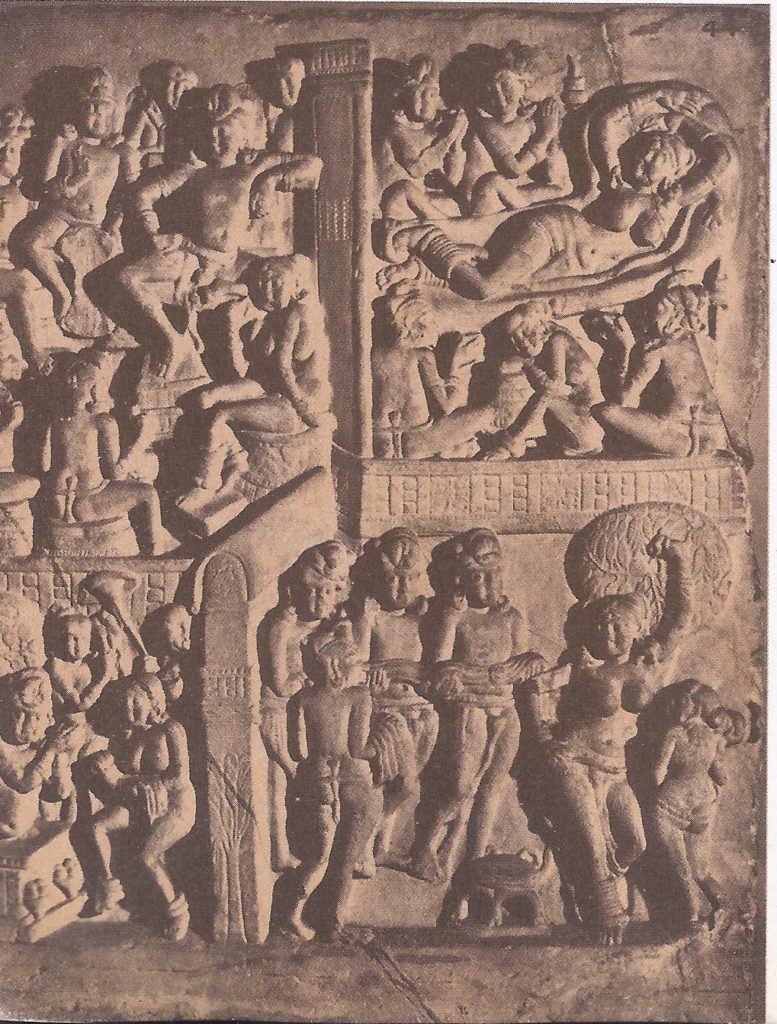
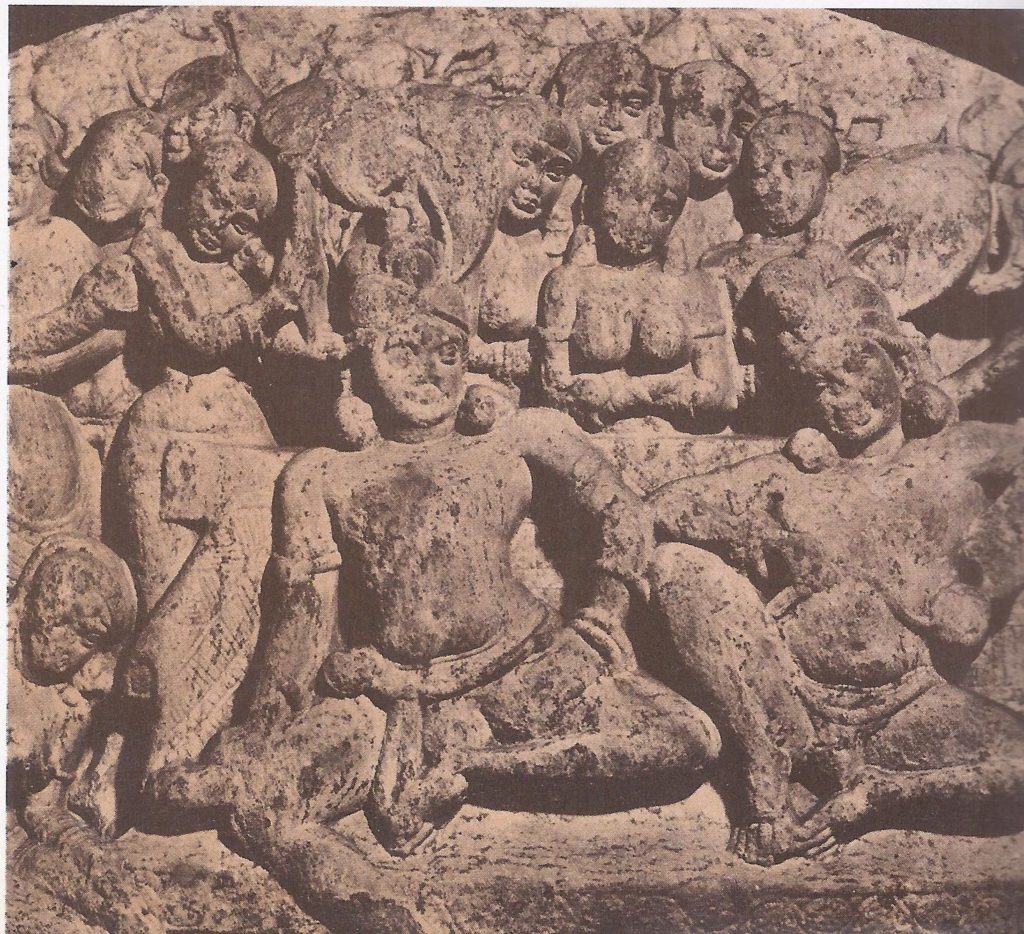
A Prince Abandons His Luxurious Life
At length, after being immersed in profound meditation throughout the night, there came to Gautama the clear insight by which he saw the true nature of all things; as day dawned he became “fully-awakened,” or “Buddha.” Buddha is in no sense a personal name, since in the view of Buddhists there had been other Buddhas before Gautama and there will be others after him. The title Buddha, namely the “Awakened One” or “Enlightened One,” indicates a spiritual or ontological status, a certain order of being. When he reached this state, the Buddha understood the transience that characterizes all mortal life and saw the ultimate transcendental end of existence, in Sanskrit called nirvana.
After this momentous insight, the Buddha remained for a week under the bodhi tree in continual meditation. Then, for a few weeks, he walked in the neighbourhood of the tree. Once again Mara is said to have approached him and to have urged him to abandon mortal existence and enter fully and finally into nirvana. The Buddha rejected this subtle attempt of Mara’s to get him out of the way, as he did all subsequent attempts. He replied that he must first instruct others in the truth he had experienced, set up an order of monks and see the order well established before he left this life. Mara, it is said, once again retired in defeat. It was to the mission he had described to Mara and which Mara henceforth did everything he could to hinder, that the Buddha devoted the remaining forty years of his life.
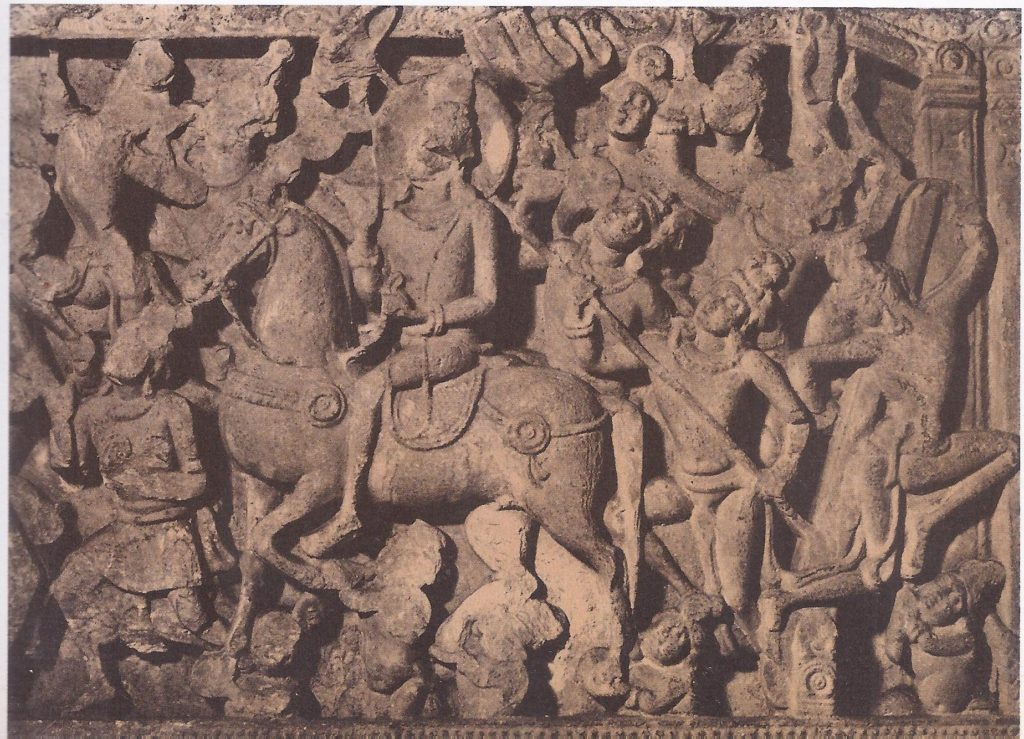
To understand the significance of the Buddha’s doctrine and the new religious community that he gathered round him, it is helpful to look first at what we know of the India he was born in. Our evidence comes mainly from the ancient Pali literature of the Buddhists, which shows a generally keener historical sense than either the Hindu Vedic texts or the Prakrit texts of the Jains, another contemporary religious group. Various critical studies have revealed that the republican groups of northeast India, such as the Sakyas, were suffering attacks from newly arisen neighbouring monarchies, particularly those of Magadha and Kosala. These monarchies were absorbing the territories and people of the republics, although the Sakyas themselves were probably not invaded during the Buddha’s lifetime.
It was thus a time of social disturbance, political change and consequently, a time also of psychological malaise. Men were asking with a new urgency questions about the meaning of existence and ultimate human destiny. The destruction of the old republican clans meant that people were being swept into the larger, more impersonal autocratic organization of the monarchy. They could no longer rely on the close-knit structure of the clan to give their lives ready-made significance. The individual became more acutely aware of his isolation and faced problems of personal conduct in which the old rules no longer applied. What, men were asking, are the causes of the indignities and injustices suffered by the individual? How should a man conduct himself? What other possible goal was there but to make the most of such opportunities as life provided to eat, drink and be merry? Such questions were not new in India, nor was the Buddha the first to suggest an answer. The need for answers was, however, being felt more acutely and the Buddha offered a doctrine significantly different from those already available.
The religious philosophies and systems that existed in India at that time were broadly of two kinds; the distinction is epitomized by two characteristic classes of religious functionary, brahmans and samanas. The brahmans were priests brought by the Aryan invaders a thousand or so years earlier. They regarded themselves as a sacred elite, in whose keeping was the hereditary practice of the sacrificial system by which they believed the cosmos was maintained. It was a stupendous claim. To the ordinary householder, farmer or merchant, however, it was a claim that had little relevance to personal problems.
It was to the needs of such men that the samanas addressed themselves. The metaphysical views and ascetic disciplines that they recommended were various and often conflicting, but common to most of them was a belief in the liberation of the soul, or ego, by personal discipline, asceticism or esoteric meditational practices. These often involved renouncing the life of the householder and undertaking a rigorous training in self-mortification to enhance the soul’s psychic powers, so that it might break out of the mortal realm into the sphere of supernatural bliss. The term “samana” indicates “one who labours,” in this case spiritually.
Such was the background against which the Buddha set forth his doctrine, or dharma — according to tradition, in a deer park near the city of Benares. Unlike the teachings of most of the other great religions of the world, the Buddha-Dharma did not require belief in a supreme and omnipotent deity or creator, or make any reference to such a being. It consisted of an analysis of the human condition, as something given, rather than as a situation to be explained by speculation about cosmic origins. The latter kind of speculation was the basis of the brahmans’ position; their theory of the importance of sacrifice the Buddha rejected. He also rejected their elitism: the doctrine he taught was true of all and true for all.
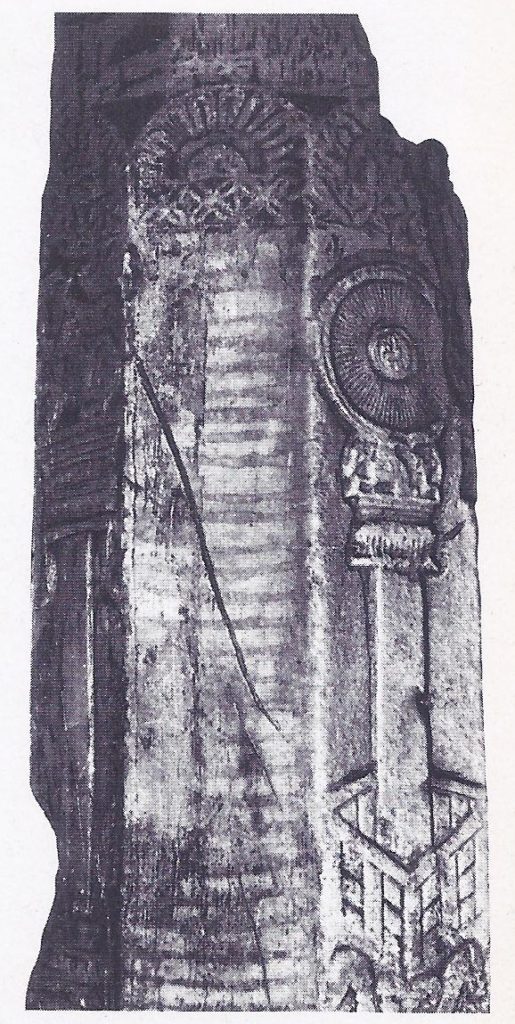
There are various ways of summarizing the Buddha-Dharma. One is in terms of the “four holy truths.” The first truth to be apprehended is that all living beings have to suffer the disorder and imperfection of ordinary earthly existence; this may be variously described as “illness,” “unsatisfactoriness,” “imperfection,” or “suffering.” At times one may be temporarily unaware of this imperfection, but eventually it will always assert itself.
The second truth is that this suffering is caused by an attitude of craving, an insatiable thirst for that which one has not.
The third truth is that the experience of suffering ceases with the end of desire in all its aspects — greed, anger and false views of life. The cessation of craving is nirvana, the Buddhist goal.
The fourth truth is that there is a way by which such cessation can be achieved here and now, namely the way of the Buddha, the way opened up by him, to be followed by all men who have faith in the Buddha’s knowledge. Such faith, however, is not blind faith, but “faith-with-a-view-to-verification.” According to the Buddha, the following of the way itself provides the verification. The invitation that the Buddha offered was summed up in the phrase “ehi passako” — “Come and see,” that is, verify the transcendent truth for yourself.
A New Religion is Founded by Buddha
In addition to characterizing all human existence as suffering imperfection, the Buddha also emphasized its transitoriness. In ordinary earthly existence no state of being persists; all is continually in flux and nothing endures. The third characteristic of existence, according to the Buddha, is the absence of any permanent individual ego. It was this that most clearly distinguished the Buddha’s teaching from that of all the other samanas of India and also from that of the brahmans. These others asserted the existence of a real permanent self or atman in each individual and bade each man find within the depths of his atman the ultimate reality. The Buddha’s doctrine was stigmatized by these “orthodox” teachers, as being nairatmya, that is, a “nonsoul” doctrine. The Buddha however asserted that it was in relinquishing this notion of a permanent “soul,” to which such’ importance had been attached and which was the cause of division between men through ideas of “I” and “mine,” that real awakening was to be found. Destroy this egocentric view of the world, said the Buddha and enter a freer, wider realm of being, which is nirvana. Moreover, it was a process that needed the experience of living in a community dedicated to the negation of the egoistic principle. Such a community was the Buddha-Sangha or Buddhist religious order.

The sangha, or order of bhikkhus (almsmen) provided the optimum conditions for living the Buddhist life. This community, which came into being when the first disciples attached themselves to the Buddha, was unique. Other groups of samanas sometimes formed groups for the period of the monsoon rains, when traveling was impossible and it became necessary to take shelter in one place, but these groups had only a temporary existence. Out of this practice, however, the Buddha and his disciples established a permanent community that existed to facilitate the practice of the Buddhist way. A recognized rule of life, conduct and a high standard of moral discipline were outstanding features of the order from the beginning.
In the course of the Buddha’s lifetime, as the number of disciples grew, the code of conduct for members of the order was worked out and formally established. This code subsequently became embodied in the basic tradition as the Vinaya, that is, the Discipline. The other main feature of the tradition was the dharma, which had come to mean, besides the doctrine, the actual collection of discourses uttered by the Buddha. This took the form of parables, allegories, discussions, stories and verses, in order to render the doctrine as clear as possible to as many as possible, since the Buddha’s teaching was intended for all men, whatever their station. Within the sangha there was no hierarchy apart from seniority in spiritual attainment; all social distinctions were (and still are) abandoned by those who entered.
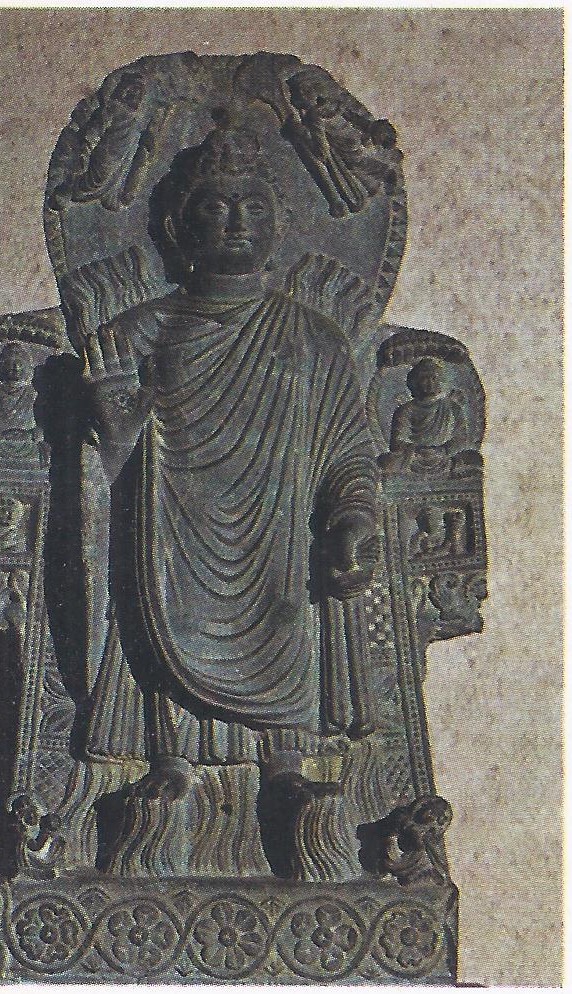
The sangha thus offered some replacement for the communal life that India had lost with the destruction of the old republican societies. Later it was to acquire far wider significance, over a far greater area. For more reasons than one, a man went for refuge to the sangha. The common formula used by Buddhists from the earliest times as a simple affirmation of faith and still universally adopted, runs as follows: “To the Buddha I go for refuge; to the dharma I go for refuge; to the sangha I go for refuge.”
Among the early members of the sangha who accompanied the Buddha on his many journeys throughout northeast India and Nepal and who devoted themselves to his mission and his needs (as Buddhist monks still minister to one another), are certain well remembered names, especially those of Ananda, often referred to as the “beloved disciple,” Sariputta and Maha Kassana. It was Ananda who approached the Buddha with a request from some of the women disciples that a parallel order for women should be established. After some hesitation the Buddha is said to have consented to this. From the earliest days an order f nuns, with its own parallel code of discipline and regulations, has been a feature of Buddhism.
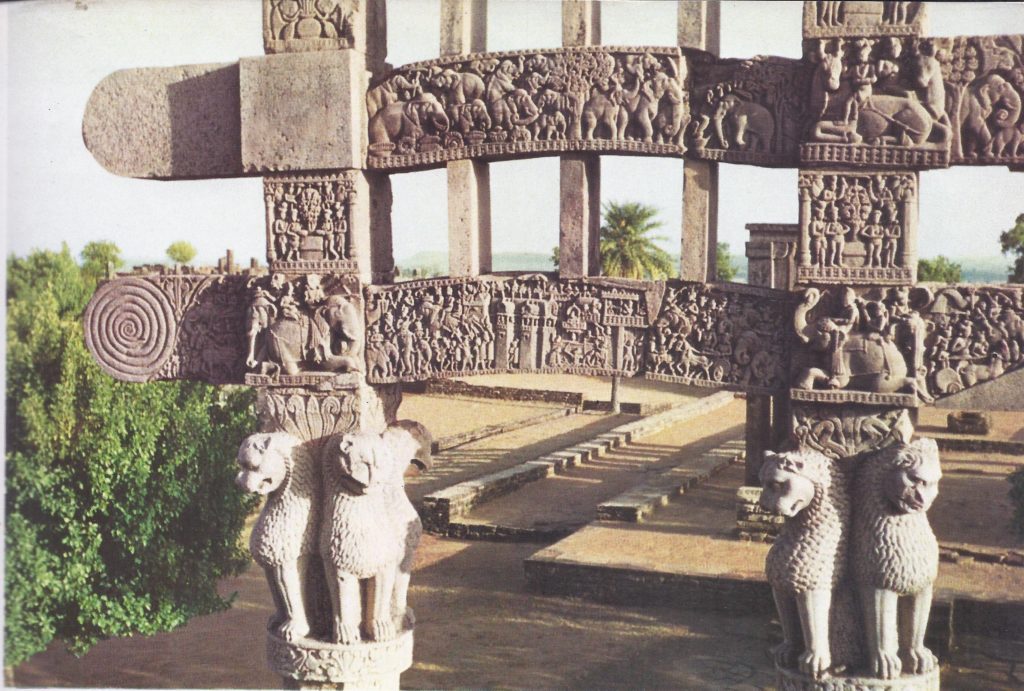
of the world.
At the age of eighty, his mortal body having come to the end of its span of existence, Gautama passed from the intermediate stage of the Buddha who still retains a mortal body to that of final and complete nirvana, or parinirvana. His bodily remains were cremated with great reverence and his ashes were distributed among various groups who claimed a share in these sacred relics. The ceremony is described in one of the longest of the Pali texts, the Parinirvana Sutta. Over each share of the ashes, it is said, a memorial mound, or stupa, was raised. The stupa was a hemispherical structure of stone or brick with the sacred relic enshrined at its center. For Buddhists such structures became symbols and reminders of the Awakened One who had first taught them the dharma. In their later, developed form, known in Ceylon as dagobas, or pagodas, these stupas became a familiar feature of the Asian countries to which the Buddha-Dharma was carried by its missionary-monks.
In India the Buddhist sangha gradually grew in size and spread from the Ganges Valley around Patna northwestward toward the Punjab and Kashmir, where its monks came into contact with elements of Greco-Roman culture in the kingdom of Bactria (on the northwest borders of modern West Pakistan). There, some five centuries after the Buddha’s death, a new form of Buddhism, known as the Mahayana, developed. It perhaps owed something to Greco-Roman influences and something to the increasing numbers of brahmans who had by then, especially since the reign of the Buddhist emperor Asoka (third century B.C.), begun increasingly to enter the order.
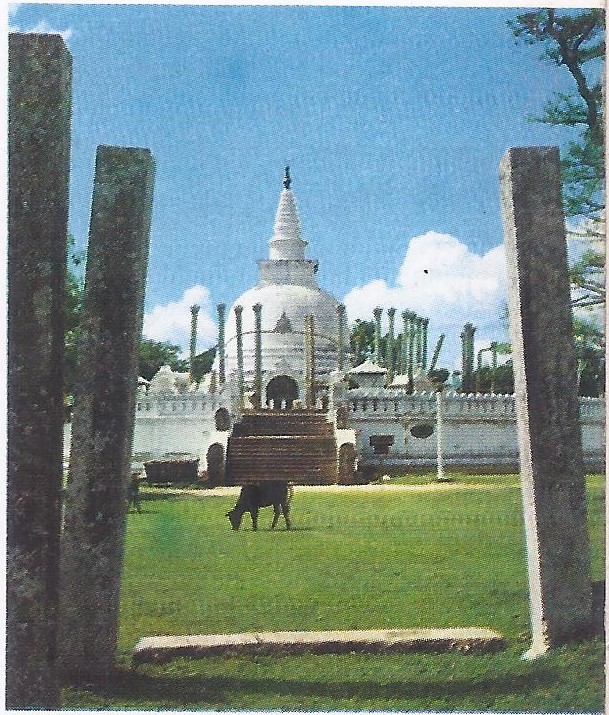
These brahmans did not easily discard their old attitudes and ideas when they donned the yellow robe of the Buddhist monk. The result was the development within the Buddhist community of a high degree of speculative philosophizing and an increasing use of non-Buddhist cults and practices among its lay supporters. By about AD. 1200, partly for this reason, the practice of the way of the Buddha had disappeared almost entirely from India. From then on, however, Buddhism was expanding in influence in the neighbouring lands of Tibet, Burma, Thailand, Laos, Cambodia and Vietnam, as well as in China and Japan, where it was already well established. Even in India the effects of the Buddha and his community influenced the philosophy, ethics and religious institutions of what had by then become Hinduism. In modern times India has begun to rediscover the way that was taught and practiced by one of her greatest sons and the Buddhist community has once again begun a remarkable revival.
